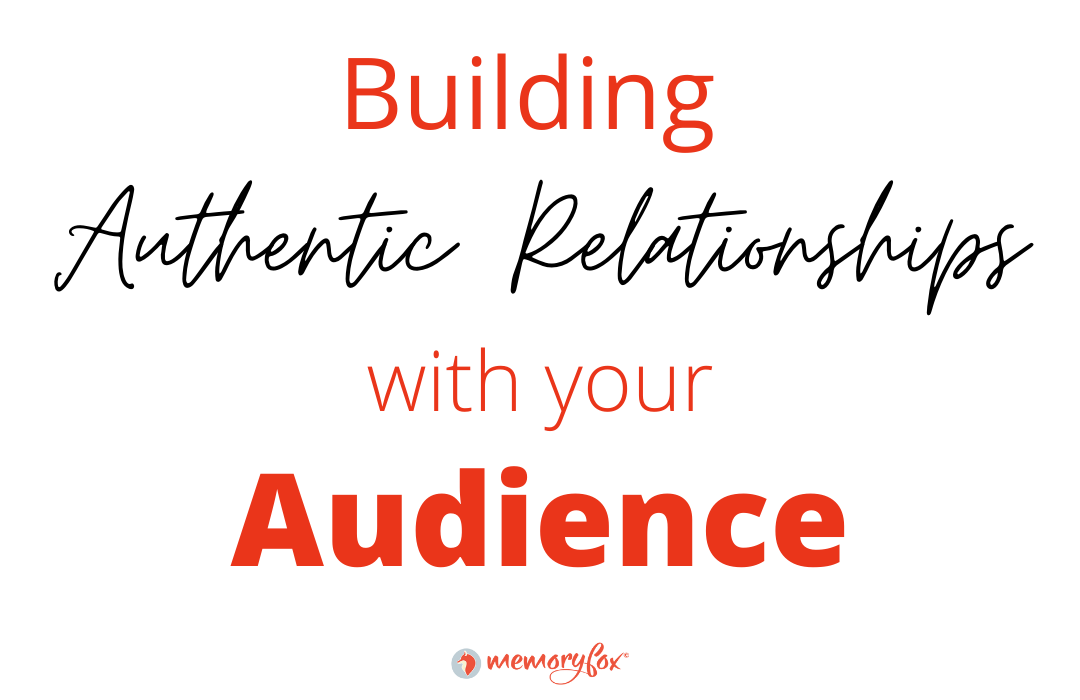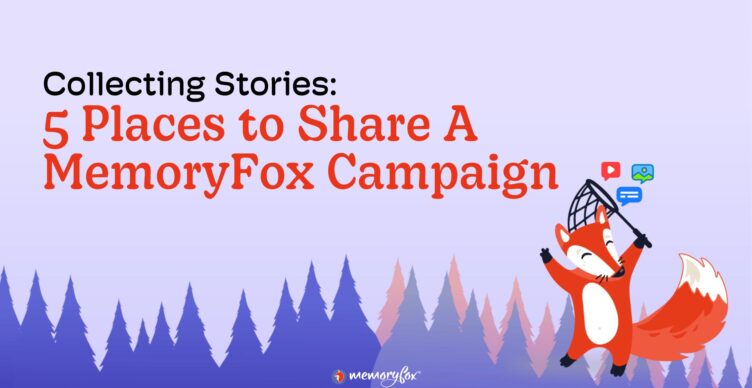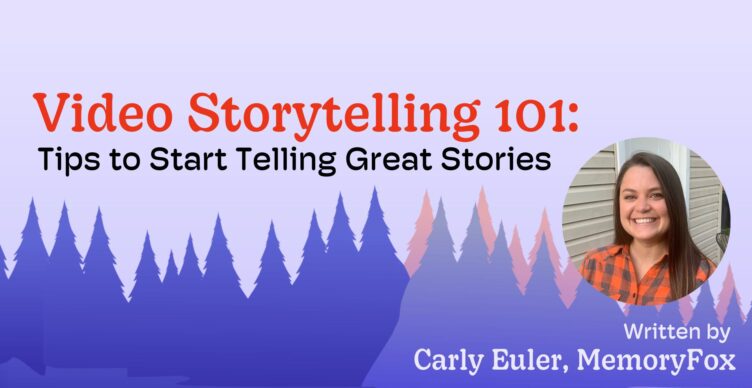How to Build an Authentic Relationship with Your Audience

In the latest episode of Storytelling with a Purpose, Patrick Duggan, the Director of Marketing and Communications at Pacific Community Ventures, talks about the value in building an authentic relationship with your audience as a marketer. And yes, this includes nonprofit marketers. But what does it mean to build an authentic relationship with your audience, and how to you start this process? We’ve compiled a guide for nonprofit marketers to build authentic relationships with their audiences. If you’re a fan of Storytelling with a Purpose, you might hear some familiar tips, too!
Building an Authetnic Relationship with Your Audience
With the social media platforms constantly evolving in scope and capability, it is simply not enough to be the most creative account on Instagram. Unique Reels and Tik Tok’s will boost your content to the top of the algorithm (if you want to expand your digital storytelling capabilities, check out this guide), but it is not enough to build an authentic relationship with your target audience.
Authenticity in marketing to your target audience establishes relationships with your audience and community, fosters and builds credibility, and strengthens the trust that the public has with your nonprofit and its services. Donors are more likely to give to your organization if they feel a genuine or emotional connection with your brand, or if they perceive your efforts as authentic or organic. Similarly, perspective volunteers are more likely to give of their time if they can easily identify how their efforts will directly make an impact on others in their communities.
To build an authentic relationship with your audience, and your community, your brand should emphasize showing or demonstrating your impact, team, volunteers, or donors, rather than simply telling about them. In other words, your audience needs to see that your brand is trustworthy and reliable, worthy of respect and credibility, and above all, genuine.
How to Be Authentic in Your Nonprofit Marketing Strategy
Authenticity in nonprofit marketing is crucial, but can be daunting or misinterpreted if executed the wrong way. Here are some simple strategic tips you can implement to foster authenticity in your nonprofit brand with your audience:
1. Be Transparent
Above all, your community will buy into your authenticity with your transparency. That means not only showcasing your success stories in volunteers, donors, beneficiaries, or community efforts, but also keeping your audience informed of shortcomings (within reason), setbacks, and changes to any publicly-stated plan or procedure, such as event cancellations or protocols for donation drives.
2. Show Support in Your Community
Your audience, and in particular, your perspective donors and volunteers, want to see that you invest in bettering the community that you are a part of. If they see that you are invested in them, they will invest their time and money in your nonprofit and helping serve their communities.
3. Demonstrate Your Impact
Highlight the impact that your nonprofit’s services have without simply telling your audience about it. Showing them how your organization has made a difference will build trust with your audience, whether that’s through pictures of trucks loaded with nonperishable food at a food drive or videos taken by beneficiaries.
4. Showcase Your Team
Featuring your team, both employees and volunteers, can have a strong impact on the perceived authenticity of your brand and content. Your audience and community will benefit from seeing behind the scenes and knowing who it is that is orchestrating your nonprofit’s mission. Showing your team takes your brand from an impersonal, online world to a reality with actual people making a real impact on the community.
5. Stay True to Your Mission
All of your outbound content and messaging should align with your mission. It shows consistency, builds trust, and helps foster the notion of the impact that your nonprofit has on the community. When it comes to showcasing your organization’s mission, ask yourself what you want your audience to know about your nonprofit or its services, and how do you want the public to feel or think about them? Answering these questions helps establish your brand’s “voice,” and aligning all of your content and messaging to this voice builds consistency and trust, and demonstrates authenticity. Above all, make sure your values are the driving force of your nonprofit brand identity.
6. Feature User-Generated Content
In an era of mistrust on the internet, user-generated content is hailed as a reliable and trustworthy piece of content on social media. A recent study of consumers in the U.S., U.K., and Australia found that audiences are 2.4 times more likely to say user-generated content is the most authentic when compared to brand-created content. Not only is it the easiest way to build trust in your brand and nonprofit organization, it also an algorithm “hack” that boosts your content to the top of the Instagram feed. What better way to tell the stories of your organization’s services than from those who benefit from them, or from the volunteers who help orchestrate them?
If you want to learn more about a super cool platform that helps you collect, organize, and share user-generated content telling the stories of your community, you can schedule a demo with us!
Authenticity in nonprofit branding creates a genuine and organic connection with your audience and community that is fundamentally built on trust. The credibility that stems from this trust can ultimately cause an increase in the number of volunteers to carry out your nonprofit’s services, a greater incentive for perspective donors to give to the organization, and even a strong relationship with the public to be ambassadors of your brand.
Want to have more nonprofit marketing tips and best practices sent straight to your inbox? Sign up for our monthly newsletter! Don’t worry, we won’t bombard your inbox.




